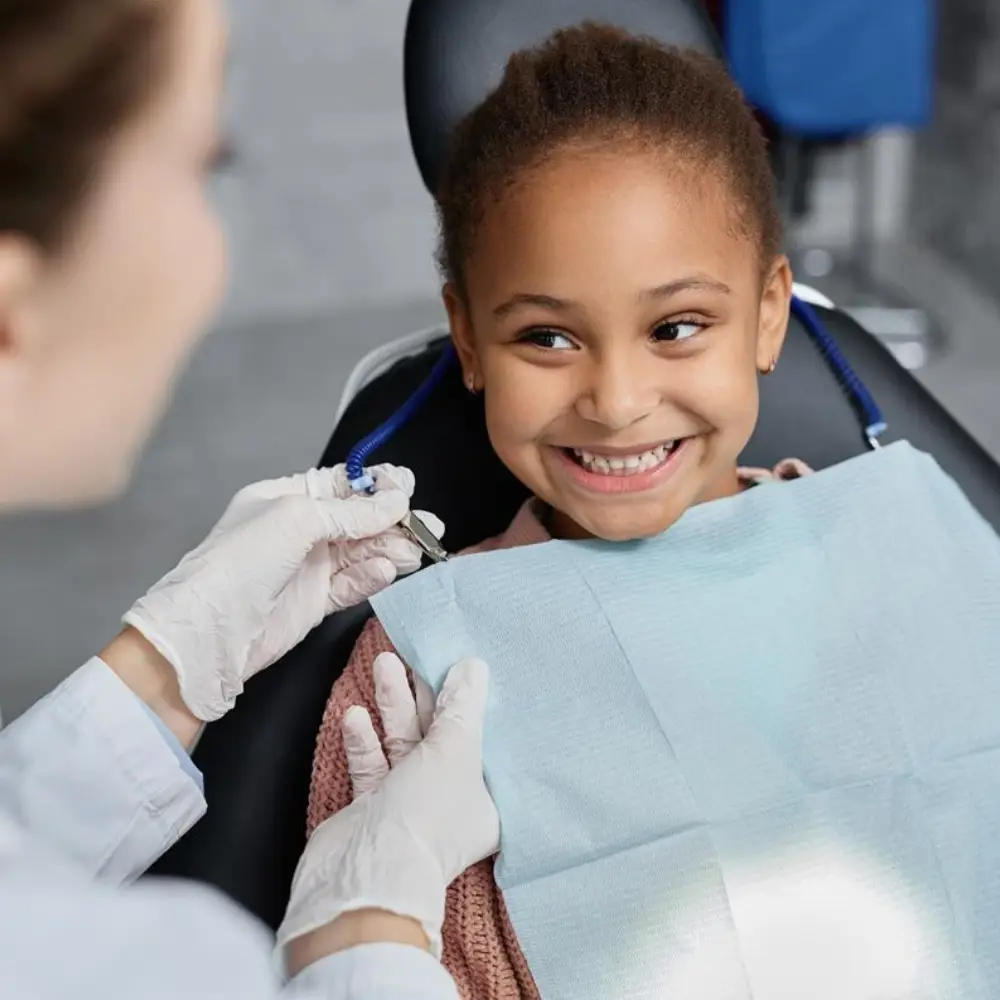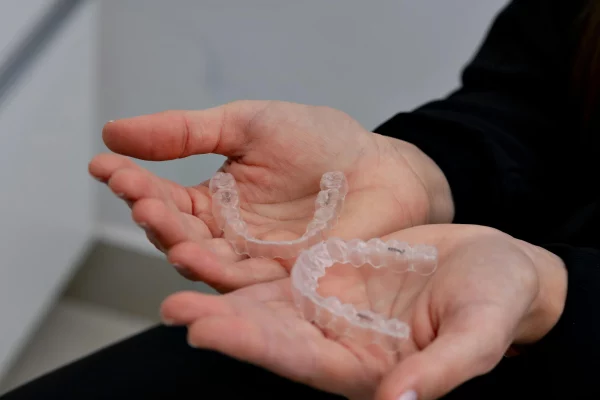Invisalign before-and-after results, quite frankly, demonstrate not only significant aesthetic improvements but also tangible functional benefits. Beyond simply enhancing one’s smile, these clear aligners address malocclusions and facilitate better oral hygiene by making teeth easier to clean. The discreet nature of Invisalign allows individuals to undergo orthodontic treatment without the conspicuous appearance of traditional metal braces, thereby integrating seamlessly into everyday routines. Ultimately, Invisalign represents a progressive approach to orthodontics that prioritizes both effectiveness and patient comfort.
What to Expect from Invisalign Treatment
Beginning Invisalign treatment marks a significant but often unfamiliar step in one’s dental journey. It’s essential to grasp the stages involved in order to foster realistic expectations and enhance preparedness. The process typically commences with a comprehensive consultation—this may involve advanced imaging and thorough assessment of dental alignment. Subsequently, patients receive their initial set of clear aligners, designed to be inconspicuous while gradually adjusting tooth position.
Throughout treatment, patients are expected to transition to new aligners periodically and attend scheduled check-ins to monitor progress. Consistent adherence to prescribed wear is crucial; lapses may impede anticipated outcomes. When followed diligently, Invisalign offers a discreet, comfortable, and effective solution for achieving improved dental alignment and, ultimately, a more confident smile.
Initial Condition vs. Expected Results
Every Invisalign journey begins with a personalized consultation where your dentist evaluates the current state of your teeth and bite. Using 3D digital scans, your provider creates a precise model of your mouth, showing how your teeth will move throughout treatment. From mild crowding to more complex spacing or bite issues, Invisalign’s customized approach ensures that each patient receives a treatment plan designed specifically for their unique dental needs.
Timeline of Visible Changes
While every case differs, most patients begin noticing subtle changes within the first few months of treatment. Major improvements usually appear between months 4 and 8, with full results typically achieved within 12 to 18 months for most moderate cases. Consistent aligner wear plays a critical role in maintaining this timeline, allowing teeth to shift smoothly into their planned positions.
Patient Commitment and Compliance
Success with Invisalign depends heavily on patient commitment. Aligners must be worn 20 to 22 hours per day, only removed for eating, drinking anything other than water, and oral hygiene routines. Neglecting to follow these guidelines can delay results or compromise treatment outcomes. Staying disciplined ensures predictable progress and stunning before-and-after transformations.
Before and After Photos: Success Stories
Reviewing authentic Invisalign before-and-after photographs provides compelling evidence of the treatment’s efficacy. Observing these transformations illustrates not only enhanced dental alignment but also significant improvements in bite function and patient confidence. Such case studies highlight the individualized approach and advanced technology that underpin Invisalign’s success. For prospective patients, these documented outcomes offer valuable insight into the potential benefits and realistic expectations associated with this orthodontic option.
Mild to Moderate Cases
Patients typically pursue Invisalign treatment to address relatively minor dental concerns, such as mild crowding, slight spacing, or limited crossbite issues involving only a few teeth. These cases, while not severe, often have a noticeable impact on both dental function and aesthetics.
Clinical photographs taken before and after treatment consistently demonstrate significant improvement. Teeth that previously exhibited overlap or separation are realigned, resulting in a more harmonious and visually appealing smile. This enhancement frequently correlates with increased patient confidence and improved oral function.
Complex Cases and Corrections
Invisalign technology has evolved to successfully address a wide range of complex dental concerns, including severe crowding, deep bites, open bites, complex spacing issues, and cases requiring both alignment and bite correction. By incorporating advanced features like tooth-colored attachments, elastics, and highly precise aligner movements, Invisalign can guide teeth and jaws into proper alignment even in challenging situations. Many patients experience remarkable transformations, with before-and-after photos highlighting significant improvements not only in bite alignment but also in the balance, symmetry, and overall appearance of their smiles.
Teen vs. Adult Results
Invisalign is highly effective for both teens and adults. Teenagers benefit from ongoing jaw development, allowing aligners to guide growth alongside tooth movement. Adults often achieve equally impressive results, though treatment may take slightly longer if addressing long-standing issues. Regardless of age, consistent wear and proper care lead to beautiful transformations.
How Invisalign Improves Oral Health and Appearance
Invisalign offers more than just aesthetic improvement; it plays a significant role in promoting oral health. Straighter teeth are notably easier to maintain, as they reduce the potential for plaque accumulation, which in turn lowers the risk of cavities and periodontal disease. Additionally, addressing malocclusion through orthodontic treatment can alleviate undue stress on the temporomandibular joint, thereby enhancing both comfort and functional efficiency. As teeth are guided into optimal alignment, individuals benefit not only from an improved smile but also from sustained dental health and overall well-being.
Benefits Beyond Straightening Teeth
While the aesthetic appeal of Invisalign is widely recognized, its health-related benefits are equally compelling. Proper dental alignment facilitates more effective brushing and flossing, thereby reducing plaque accumulation and subsequently lowering the risk of dental caries and periodontal disease. Additionally, correcting malocclusion can help prevent abnormal tooth wear, which is essential for maintaining dental integrity over time. Improvements in bite function may also alleviate temporomandibular joint discomfort, and some patients report enhanced speech clarity following treatment. Ultimately, properly aligned teeth not only promote self-confidence but also contribute significantly to long-term oral health.
Impact on Bite and Jaw Alignment
Misaligned bites can contribute to headaches, jaw pain, and even sleep issues. Invisalign addresses these concerns by gradually adjusting bite alignment, distributing chewing forces evenly and reducing pressure on jaw joints.Correcting the bite can also prevent future dental problems such as tooth fractures, enamel erosion, and TMJ disorders.
Tips for Maximizing Your Invisalign Results
Your Invisalign results really hinge on your own dedication. These aligners are designed to be user-friendly, sure, but you actually have to wear them as directed, otherwise, you’re just wasting time (and money, honestly). Consistency matters: take them out too often or slack on oral hygiene, and you risk slowing down all your progress. Seriously, keeping your teeth and aligners clean isn’t just for looks; it helps avoid setbacks and keeps everything on track. Stick to the basics and you’ll see better, faster results. Ignore the routine, and don’t be surprised if your treatment stalls.
Proper Wear and Care of Aligners
To maximize treatment efficacy, it is imperative to wear aligners for approximately 20 to 22 hours each day. Aligners should only be removed during meals and for oral hygiene practices, such as brushing and flossing. For maintenance, clean aligners gently with a soft-bristled brush and lukewarm water to prevent distortion or discoloration; exposure to hot liquids should be avoided while wearing them, as this can affect the material’s integrity. When not in use, store aligners in their designated case to minimize the risk of loss or contamination. Adhering to these guidelines helps ensure that aligners remain clear, hygienic, and effective throughout the duration of orthodontic treatment.
Keeping Up with Dentist Visits
Regular dental check-ups every six to eight weeks are fundamental to the success of Invisalign treatment. These periodic assessments enable your dentist to carefully track your progress, implement any necessary adjustments, and confirm that the treatment is proceeding as intended. Although these appointments are typically brief, they play a critical role in facilitating consistent tooth movement and achieving optimal results.
It is also essential to promptly communicate any discomfort, issues with fit, or instances of lost aligners. Timely reporting allows your dental professional to address concerns efficiently, minimizing disruptions and supporting a smooth and effective Invisalign experience.
Frequently Asked Questions (FAQs)
1. How soon will I see results with Invisalign?
Many patients begin seeing early shifts in their teeth within the first 6 to 8 weeks of Invisalign treatment. As the aligners continue to work, more noticeable changes often occur between months 4 and 8. The full course of treatment usually takes between 12 and 18 months, depending on the severity of the alignment issues and the consistency of aligner wear. Staying on schedule with daily wear and attending regular checkups helps ensure steady, effective progress. Each stage brings you closer to a healthier, more confident smile.
2. Are Invisalign results permanent?
Invisalign results can last for many years with the right maintenance. After treatment, wearing retainers as prescribed is essential to keep your teeth in their new positions and prevent them from shifting back. Over time, your dentist may adjust the frequency of retainer wear, but consistent use remains critical for protecting your investment. By following your provider’s retention plan, you can enjoy a straight, confident smile for the long term.
3. Can Invisalign fix severe dental issues?
Invisalign is capable of correcting a wide range of complex dental issues, including severe crowding, bite misalignments, and noticeable spacing problems. Thanks to advanced technology and customizable treatment plans, many cases that once required traditional braces can now be successfully treated with clear aligners. However, in extremely severe situations, your dentist may suggest combining Invisalign with other orthodontic or dental procedures to achieve the best possible outcome. A comprehensive evaluation will help determine the most effective approach tailored to your specific needs.
4. How often should I visit my dentist during treatment?
Most patients schedule visits with their Invisalign provider every 6 to 8 weeks throughout treatment. These routine check-ins allow your dentist to closely monitor your progress, verify that the aligners are fitting as intended, and make any necessary adjustments to keep your treatment on track. If any issues arise, such as unexpected tooth movements or discomfort, your provider can address them promptly during these visits. Regular appointments are an important part of ensuring a smooth and successful Invisalign experience.
5. Can I eat and drink normally with Invisalign?
One of the biggest advantages of Invisalign is the freedom to enjoy your favorite foods and beverages by simply removing your aligners during meals. This flexibility means you don’t have to worry about food restrictions common with traditional braces. However, it’s essential to brush and floss thoroughly before reinserting your aligners to maintain both oral hygiene and the clarity of the trays. While wearing your aligners, water is the only beverage recommended to prevent staining, distortion, or sugar exposure that could affect your teeth or the aligners themselves. Following these habits helps protect your smile and keeps your treatment progressing smoothly.
If you’re ready to experience your own Invisalign before and after transformation, the journey starts with a consultation. Our skilled team will evaluate your smile, discuss your goals, and create a customized plan tailored to your needs.
Take control of your oral health and confidence with clear aligners that fit your lifestyle. Schedule your Invisalign consultation today and begin your path to a straighter, healthier, and more radiant smile.


